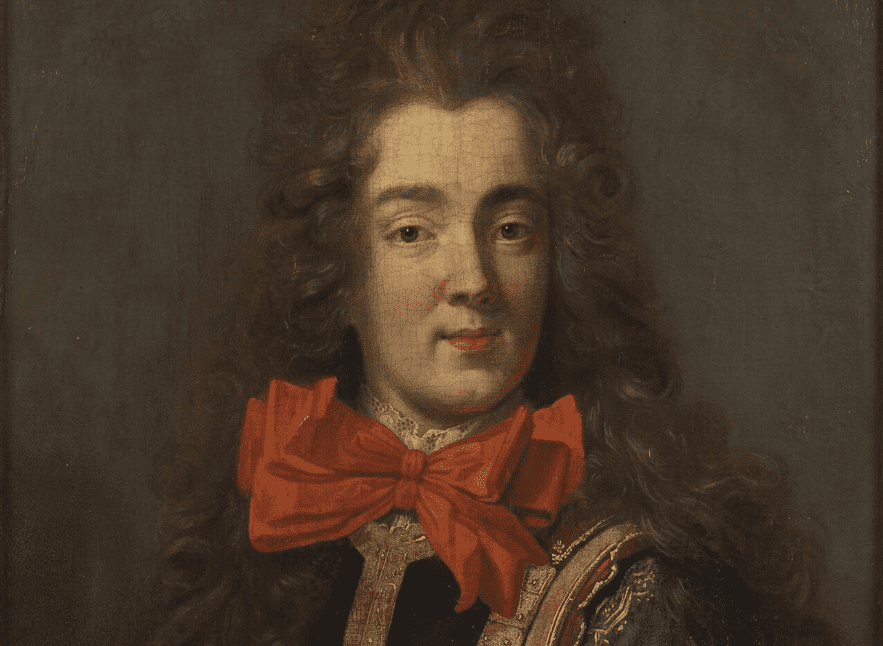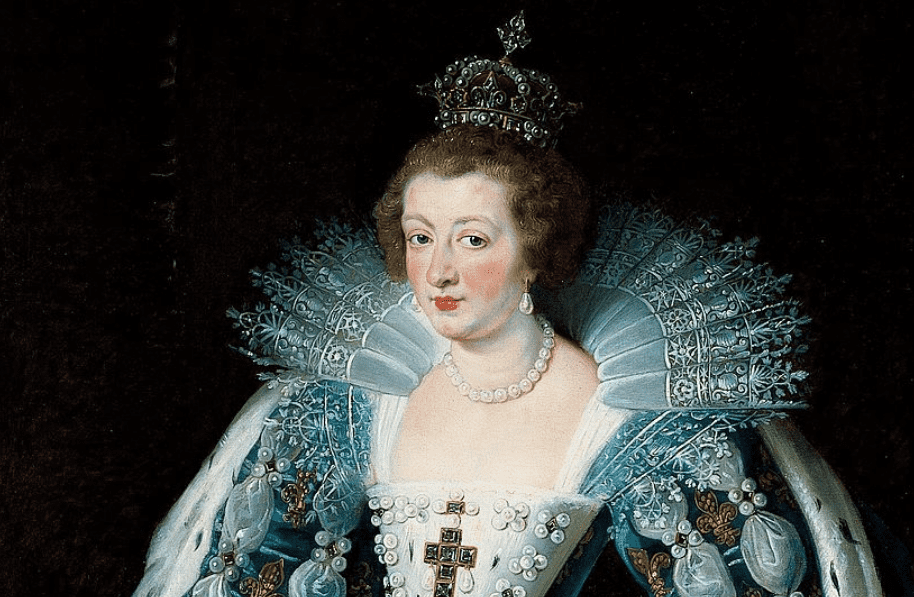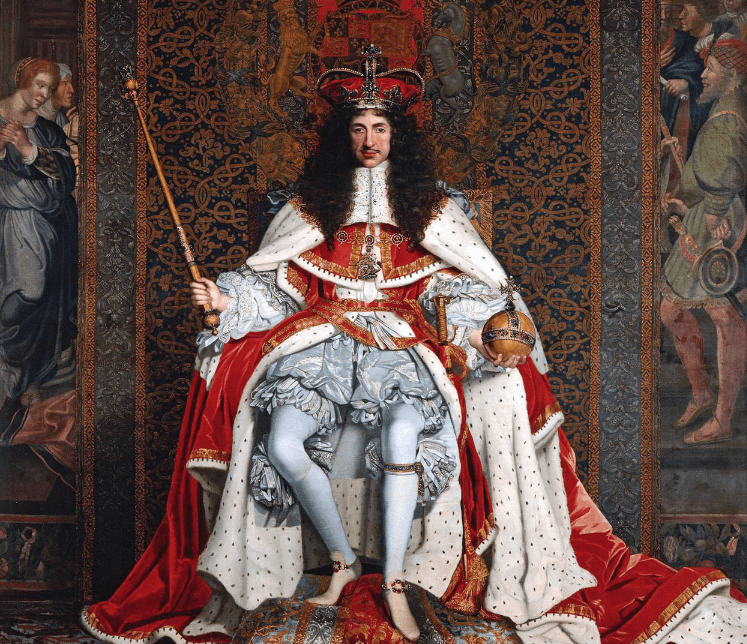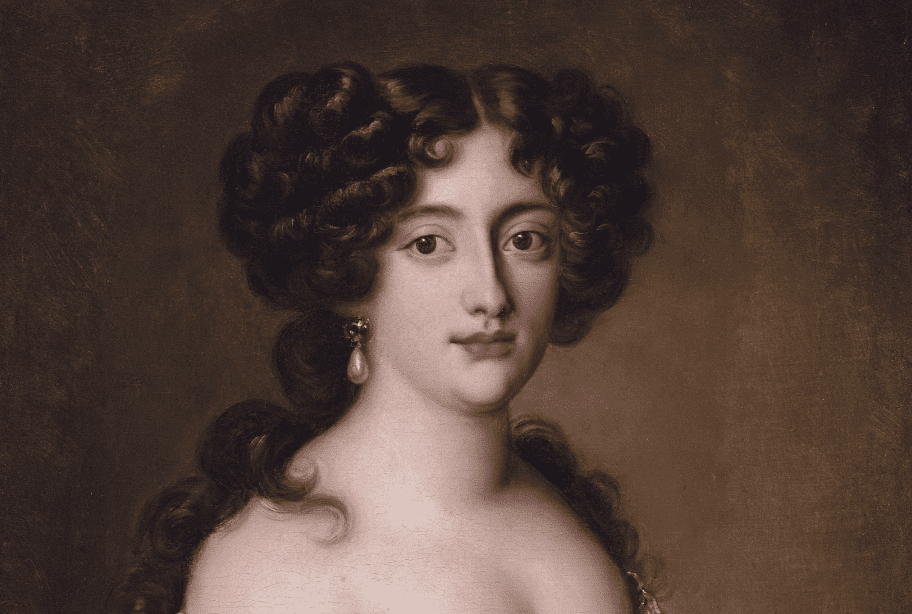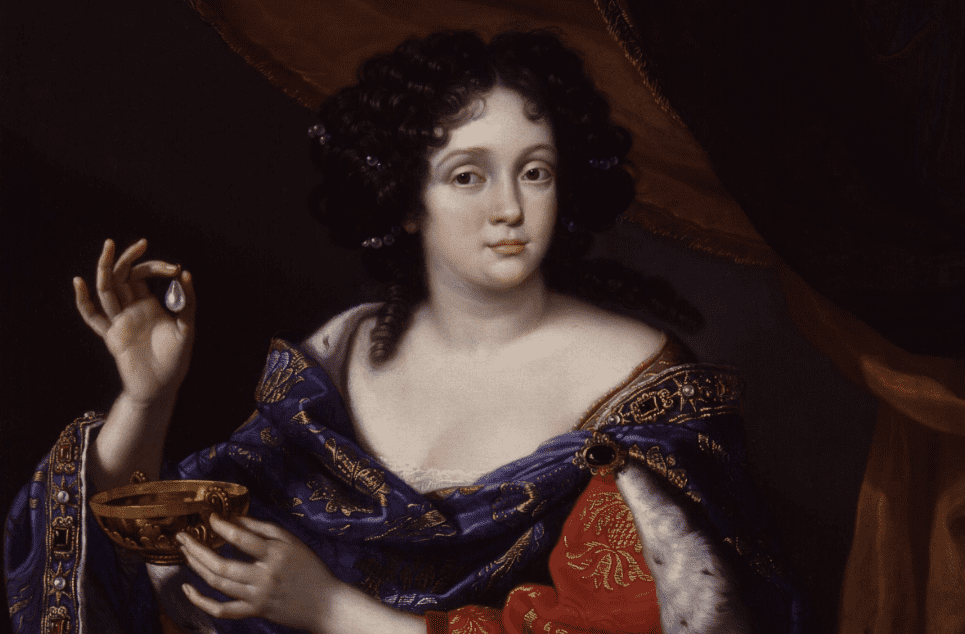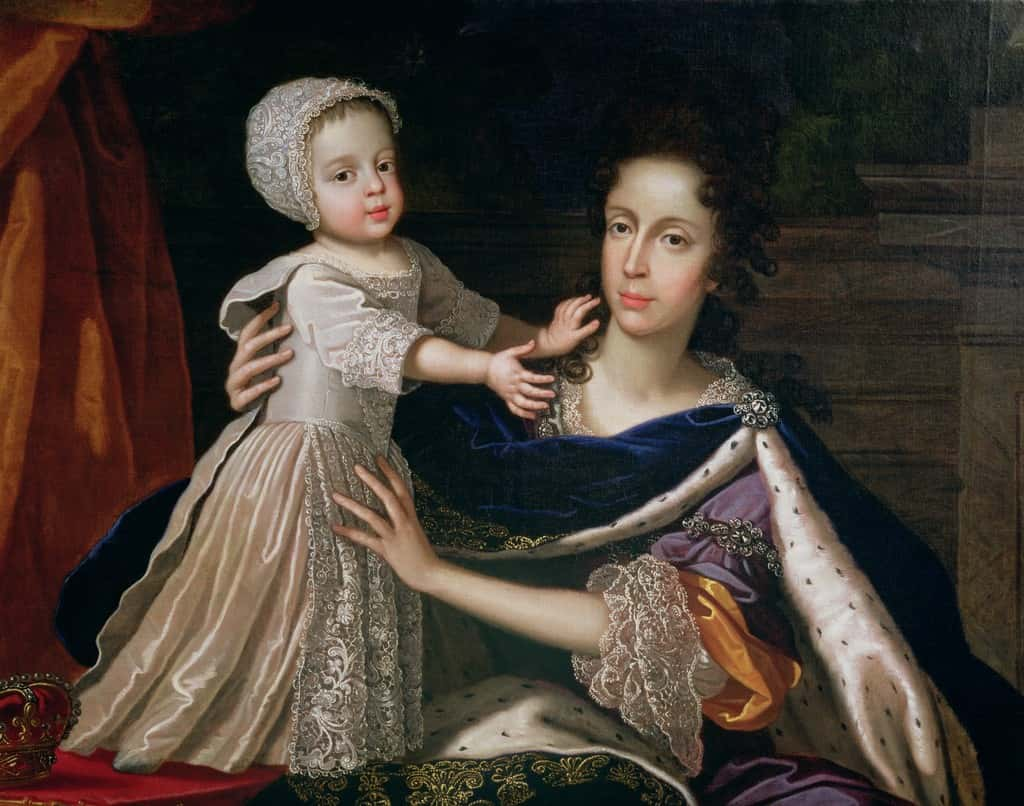Italy’s Most Scandalous Duchess
Hortense Mancini was born in Rome in 1646 to Baron Lorenzo Mancini and Girolama Mazzarini. She was the fourth of five sisters who collectively became known as the Mazarinettes, as well as the niece of the famous Italian Cardinal Mazarin, chief minister to Louis XIV of France.
As she herself once said about her life: "If the events that I have to recount to you seem like something out of a novel, blame it on my unhappy fate rather than my inclination"

1. A Most Noble Lineage
The Mancini family were one of Italy’s oldest noble families. Nobility dating back thousands of years in fact. The family had more titles than you can count, including dukes, counts, princes, bishops, and knights. Talk about a lineage!
2. Early Tragedy
Hortense was very yoiung when her father Lorenzo died in 1650. Soon after the loss, her mother the family off to France, hoping her brother Cardinal Mazarin could arrange good marriages for the her girls.
3. Her Brother Was A Wild One
Hortense’s brother Philippe Jules Mancini arrived in France with the family, and was set to be Cardinal Mazarin’s heir. But Philippe wasn’t quite as disciplined as Mazarin would have liked. The Cardinal later described him as "disapplied, unpredictable, and subject to whim".
4. More Family Tragedy
Hortense’s other brother, Alphonse Mancini, lost his life in a terrible accident. Alphonse was somewhere between the ages 12-14 when he hit his head on a cobblestone while playing a game. The tragedy shook the family: After all, they had five girls but only three boys to spare.
 Getty Images
Getty Images
5. Friends In High Places
While in France, aristocrat Anne of Austria took the girls under her wing and treated them like they were her own. This was no small compliment: Anne was actually the mother of the young Sun King, Louis XIV.
6. Husbands Were Found
It took awhile, but eventually Cardinal Mazarin was able to find suitable husbands for his nieces. All of the Cardinal's matches for the girls were aristocratic and wealthy men—including more than one prince. So, he managed to do quite well by them—at least on paper.
7. She Was Almost A Queen
At first, the beautiful Hortense caught the eye of King Charles II of England. He even proposed to her. The Cardinal, however, turned him down. Why you ask? Well, at the time, Charles was exiled from the English throne, and Uncle Mazarin thought the match wasn't prestigious enough for his favorite niece. Unfortunately, he chose wrong, as Charles was restored as King just months later. When the Cardinal tried to open up the deal again, Charles refused.
8. Many Rejected Proposals
Turns out the King of England wasn’t the only proposal that Cardinal Mazarin rejected for his young niece. Charles Emmanuel II de Savoy asked for her hand, but Mazarin refused to give the suitor a castle as a part of the dowry bargain, so it was a no go.
9. She Sure Was A Catch
As you can see, Hortense had many suitors interested in her. This shouldn't come as a surprise given that she was tall, slim, had waist-length black hair, and was accomplished in music, languages, and sports. She also had impeccable lineage. What wasn’t to like?
10. The Youngest Mazarinette
Hortense's sister Marie Anne Mancini was the youngest of the five sisters, and apparently even sometimes outshone Hortense. According to historians, she was referred to as "the wittiest and most vivacious of the sisters".
11. The Other Marie
Anna Maria Mancini (not to be confused with Marie Anne) was the third of the Mancini sisters. With her dark Italian looks, she captured the jewel of the French court: King Louis XIV was besotted with her, though they never consummated their love.
12. A Symbol of Love
In fact, King Louis XIV was so smitten with Anna Maria that he gifted her a set of pearls as a token of his love. They were tear-drop shaped, 50 carats, and contained pink overtones. When they turned up at a Christie’s auction in 1979, they sold for $253,000.
13. Senior Lady
Olympia Mancini, the second eldest Mancini, was also rumored to be the one-time mistress of Louis XIV. It seems no man could resist a Mancini.

14. Five Daughters, One King
Hortense Mancini's great-granddaughters were almost as notorious as the Kardashian sisters in their time. Four of the five girls became mistresses to King Louis XV, which caused quite a stir at court. They followed one another in succession, each having her own motives and ambitions for being with him. Guess they took after their ancestors!
15. Thanks, Mom
Despite the attentions King Louis XIV lavished on her, Anna Maria got the short end of the stick when it came to her mother Girolama. Girolama was once told by an astrologer that Anna Maria spelled trouble for the family, so as the Mancini matriarch was dying, she begged her brother Cardinal Mazarin to "shut [Anna Maria] up in a convent and keep her there". Luckily, Anna Maria escaped this fate, and ended up married to Lorenzo Onofrio Colonna.
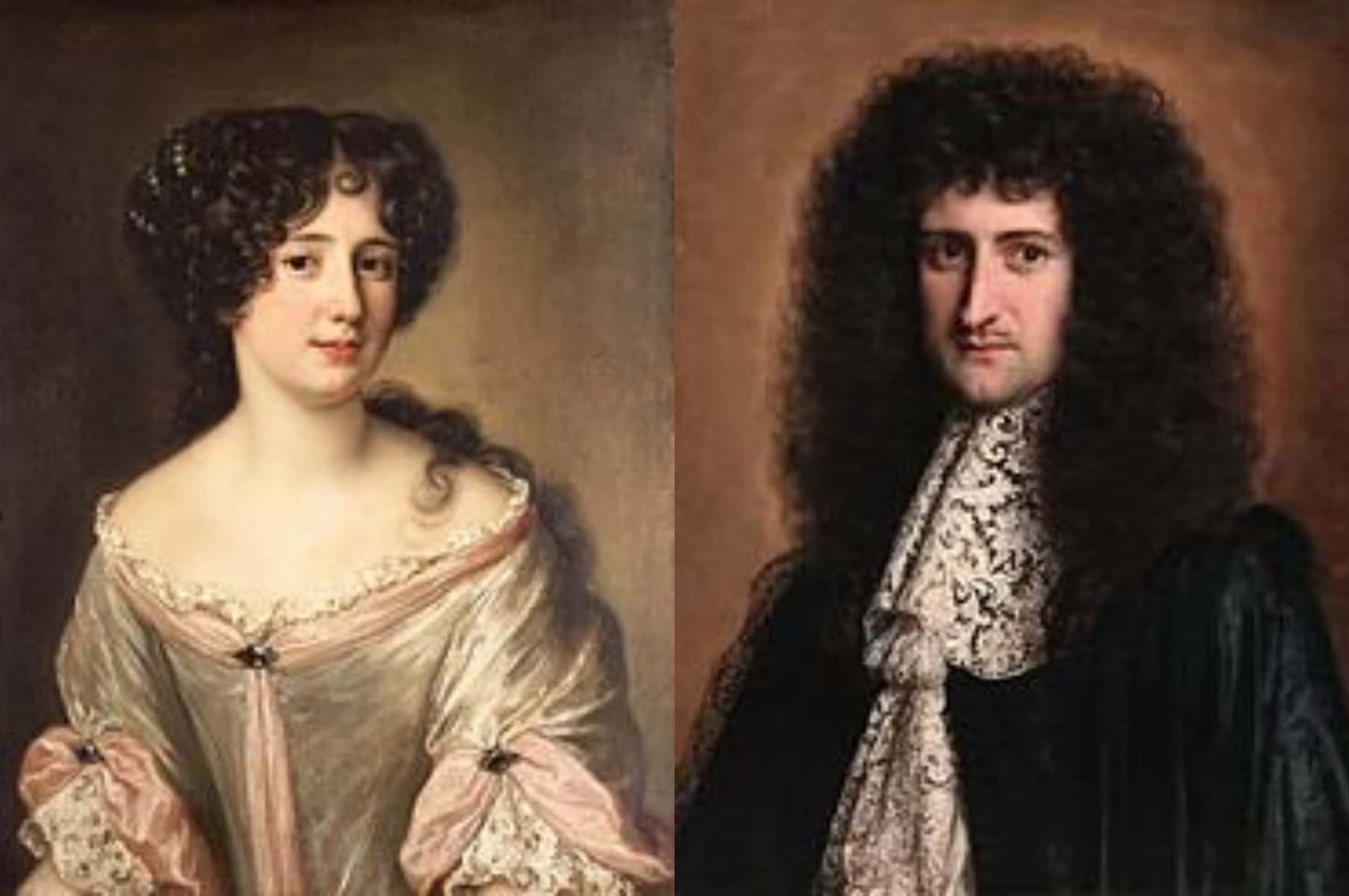
16. Well, What Do You Know
On their wedding night, Colonna was shocked to discover that his bride Anna Maria was still a virgin. He had simply assumed that she and King Louis had been lovers, and stated his surprise at "finding innocence among the loves of kings".
17. Deathbed Contract
Hortense's wedding in all this, however, was only settled on Cardinal Marazin's deathbed: in 1661, 15-year-old Hortense finally married Armand-Charles, Duc de la Meilleraye. Armand fit the bill in terms of massive wealth, but he was twice Hortense’s age, and the union was not a joyful one. After the Cardinal passed on and left Hortense his sizeable fortune, she lamented that she was "the richest heiress and the unhappiest woman in Christendom".
18. Strange Ideas
Hortense had good reason to be sad: Armand was a veritable nut job. He was known to search Hortense’s room for hidden lovers each night before locking her in, refused to allow the female servants to milk cows because he felt it was too sensual, and often knocked out the front teeth of female servants to make them look less attractive. Oh, and he quite frequently eliminated the private areas from human figures in the artworks he owned. Um, what?
19. The Sidonie Affair
Hortense became increasingly miserable in her marriage, and ended up starting an affair with a woman named Sidonie de Courcelles. Armand definitely didn’t care for this arrangement, and sent the pair to a convent. According to Hortense’s memoirs, this didn’t quite have the intended effect, and she and de Courcelles spent their time tormenting the nuns before making an escape.
20. Mother of a Queen
Laura Martinozzi was a Mancini cousin and another one of the Mazarinettes. Like all of the women in her family, Laura married well, snagging the Duke of Modena. But Laura's daughter did her one better: Mary of Modena married James II and became Queen of England, Ireland, and Scotland. Not bad, even for a Mazarin—and these powerful connections often came in handy for Hortense.
21. Failed Escape
By 1666, Hortense had finally had enough of her unhinged husband Armand. Feeling slim and perky after the birth of her son, she wanted to rejoin court life. Well, Armand couldn't have that: He took all of her jewellery as she was dressing and forbade her to return to court. Hortense, now in tears, tried to flee the house. Unfortunately, it wasn't successful—Armand had bricked up the exit. Then, when she tried to escape through another passage, he simply ordered the servants to detain her.
22. Not Very Ladylike
But in 1668, at the age of 22, Hortense tried again. With the help of her brother, she finally escaped Armand's clutches and fled her home, leaving behind her young children.
23. The Woman Who Rides Like a Man
When Mancini finally freed herself from her nightmare marriage, it became the talk of the town, and she quite promptly began gallivanting across Europe in a highly unladylike manner. She dressed as a man, drank, gambled, shot, and took lovers of both genders. This behavior likely didn’t make her many friends in society, but she must have had fun doing it.
24. Putting It to Print
In 1675, Hortense was one of the first women in history to ever publish an autobiography in her own name. Her sister Anna Maria, who had similar bad luck with men, also published a memoir. Over time, their names became synonymous with "renegade wives".
25. Permission to Flee
After the birth of their third child, the relationship between Anna Maria Mancini and her husband started going south, and she began worrying that he was going to kill her. She decided the smartest thing to do would be to flee her home; her sister Hortense, naturally, accompanied her.
26. Childish Prank
In her memoirs, Hortense recounts a prank played on her then 6-year-old sister Marie Anne by her uncle the Cardinal. The Cardinal started out teasing Marie Anne about having an admirer, and then escalated the prank by jokingly accusing her of being pregnant. Pretty soon, the whole court was in on the act, taking in Marie Anne's clothing to make it seem like she had gained weight, and even placing a newborn in her bed. 17th century humor: it's not like ours.
27. Helping Hand
Although Hortense had finally left her husband, he kept all of her money, leaving her in need of some assistance. Both King Louis XIV and the Duke of Savoy, her old suitor, stepped in to support her financially. Savoy also offered her a house, and made her his mistress until he passed on in 1675.
28. Out on Her Butt
There was a small problem: the Duke of Savoy had a wife, Marie Jeanne Baptiste. As you can imagine, Marie wasn’t exactly Hortense’s biggest fan, and when Savoy passed on, Marie promptly kicked Hortense out of the house. At the same time, the jealous, crazed Armand froze all of Hortense's income, including her royal pension.
29. Passage to England
But Hortense was nothing if not resourceful, and after her desperate situation in Savoy, she set her sights on another old lover: King Charles II of England. To gain passage into England, Mancini arranged a visit with her niece as a pretext, and made sure to dress as a man to avoid any unwanted detection.
30. Reintroduced
If Hortense ever worried that Charles wouldn't taker her back, she needn't of. He almost immediately opened his (bedroom) doors to her, and she became his chief mistress. This position came with a financial perk: English money that her husband couldn’t touch.
31. Party Girl
Not everyone was as charmed by Mancini as the King. Charles's old chief mistress Louise de Kerouaille was heartbroken at her demotion. A friend of Kerouaille recalled that in one visit, "She opened her heart to me…explained to me what grief the frequent visits of the King of England to Madame de Sussex [Hortense Mancini] cause her every day".
32. Love Letter
Mancini reportedly once had a love affair with Aphra Behn, one of the first English women to make a living as a writer. Behn's "The History of the Nun" even pays romantic tribute to Mancini by saying, "how few objects are there, that can render it so entire a pleasure, as at once to hear you speak, and to look upon your Beauty?"
33. Murder Scandal
The Affair of the Poisons was a huge murder scandal that took place during the reign of King Louis XIV, and the Mancini family was right at the heart of the controversy. When a woman named Madame de Brinvilliers was accused of poisoning her father and brothers, the royal court worked itself up into a state of paranoia and started seeing potential poisoners everywhere. At the end of the ordeal, many high-level aristocrats were implicated, including Hortense's sisters Olympia and Marie Anne.
34. Busy Woman
During the investigation of the Poison Affair, Olympia in particular was accused of plotting to kill the king’s mistress Louise de La Vallière, as well as her own husband and, later, Queen Maria Luisa of Spain. As a result, Olympia was exiled from France, proclaiming her innocence all the while.
35. A New Playmate
While at the English court, Mancini met Anne Lennard, King Charles's illegitimate, teenaged daughter by another mistress. It seems an attraction to Hortense ran in the English royal family: she and Anne soon began a rumored affair, though Anne was married and Hortense was already chief mistress to dear old dad.
36. A Nightgown Duel, Seriously?
Hortense and Anne's steamy tryst came to a head in a very public, very sensual fencing duel where the two women were clad only in their nightgowns. After this display of lust, Anne's husband finally stepped in and sent her off to the country, where she reportedly locked herself in her room, cried uncontrollably, and kissed a miniature portrait of Hortense at all hours of the day. Hortense, however, wasn’t nearly as attached, and seemed to have no trouble moving on to her next affair.
37. Crossing the Line
You’ve got to give it to Hortense: the girl could seriously party, and she had no trouble keeping up with King Charles II. For his part, Charles didn't seem to mind most of Hortense's cavorting, but he certainly didn't like to see her dallying with his daughter Anne—and when Mancini took up with the Prince of Monaco shortly after, it was the last straw. Charles ended the affair permanently and cut off his money, though that part was only temporary.
38. Not Guilty
For her part in the Affair of the Poisons, Marie Anne Manicni was believed to have plotted to poison her husband so she could be free to marry her own nephew and lover, the Duke of Vendome. Unlike her unfortunate sister, however, Marie Anne was never formally convicted of anything.
39. Can’t You Take a Joke?
In fact, Marie Anne spitefully showed up to her trial with her husband on one arm and her lover, the Duke of Vendome, on another. She showed no fear, and swore that the so-called plot to murder her husband was meant as a joke. If the court didn't believe her, she said, they could just ask her husband himself: here he was. After that power move, they had to let her go.
40. I’m Not Coming Back
For all the intervening years, by the end of Hortense's life her husband Armand still hadn't given up trying to force her to come back and be miserable with him. He even launched a legal suit against her. None of this, however, mattered a whit to Mancini: she defiantly stayed in England, growing older, running lively salons, and gambling away much of her money.
41. Travelling Show
Yet tragically, after Hortense died in 1699, the ever-watchful Armand punished her with one final indignity. As a hard-living woman, Hortense left many debts behind her, and one of her creditors decided to claim her lifeless body as collateral in the hopes of getting back some of what she owed. Armand saw his chance, and ruthlessly took it: he bought her lifeless body and paraded it around France for months. Mercifully, he eventually stopped, and Hortense is now buried beside her beloved uncle Cardinal Mazarin.
Sources: 1, 2, 3, 4, 5, 6, 7, 8, 9, 10, 12, 13, 14, 15, 16, 17, 18, 19, 20




